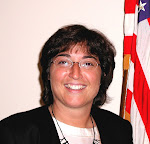Zero G – Saturday, December 8, 2012 from Ft. Lauderdale Executive Airport
I am learning to sell space travel. Yes, space travel. (www.spacexc.com). Just you and the pilot. My dream would be to go in to space but you have to prepare. One of the steps is to go Zero G and this past Saturday was my day!
Gene and I were at the Renaissance hotel at 8:30 and were each given a flight bag with a personalized flight suit! That makes you feel special. And especially when you see the upside down name tag, meant to stay that way until you complete the mission and they place it the correct side up showing you graduated. Gene was there as a non-flyer guest. There were 30 of us for the safety briefing – from Austria, Turkey, Switzerland, France, Germany, FL, Washington, DC…many had come to Florida JUST for the Zero G experience.
The safety video showed the modified Boeing 727-200 doing the parabolic arcs as the plane’s nose went up 45 degrees where we would feel the 1.8 G forces and then a 30 degree nose dive down to feel weightless. (Watching and experiencing are two different things!)
We had a non-protein breakfast, went through security screening at the hotel, boarded the mini bus to the airport and posed for photos in front of G-Force One!
There are six rows of 36 seats in the rear of the plane. I was in row 1, seat E. Harry, from Munich, Germany, was beside me in 1D and he had promised himself to experience this before his 50th birthday. He is 48 and traveled to Florida without his wife and children. Frank, in 1F, was celebrating his 70th birthday, and his wife was also a non-flyer guest; he lives near Punta Gorda, FL.
Our floating zone was the GOLD group, as we could tell from our thick socks we were given to wear in our floating zone. Ten in each group – Gold, Blue or Silver. Gold was in the front of the plane. Take-off was normal except there are no windows near the seats. The four windows were in the middle of the plane in the emergency exit area. It was a strange sensation not knowing when you were set for take-off or landing.
We found out later we were over the Gulf of Mexico for our 100 miles long and 10 miles wide of required air space. After a normal take-off each person went to their floating zone to prepare. The entire section in front of the seats was a wide open space; the white walls, floors and ceiling were padded. The flight attendant had constant contact with the pilots and he would shout out “one minute”. We took our places on the floor- laid out flat and waited. And that first wait was an eternity. You know what to expect but you don’t believe it until it happens.
As the plane arcs upward, you feel like a 10,000 ton blob. Your body sinks to the floor and you have difficulty lifting your feet off the floor. You feel like you are being suctioned down, down, down…
And after 30 seconds, you feel free! Your body begins to float off the floor. Huh??!! Yep, it floats upward, just like a meditation table in the magic show. But it is you, so you know it is for real! And for about 30 seconds you can do whatever you please!! You float and move around freely. You move slowly and just FLOAT. I can’t describe it any better than to say you FLOAT. It is the strangest feeling! For the first few times, your mind cannot comprehend what your body is doing. You’re not used to having your head under your body without falling!! And you see people floating past you.
And then, just as suddenly, the flight attendant is telling you “Coming down. Feet first.” And you quickly learn what that means! :) If you are in the wrong position when the plane reaches Earth’s gravity, you could come down on your head, shoulder, arms and feel your entire body weight – not a good thing!
The first three arcs were Lunar and Martian as they have less gravity than on Earth but more than “zero”. You could do one finger push-ups!
The next 13 arcs were “Zero G” – weightless. Our section leader in our floating zone opened a bottle of water and I caught a drop in my mouth as it floated past! And we tried to eat the small pieces of candy as they sailed past. That was much harder than it looks! We tried different maneuvers for each period of Zero G, which lasted about 30 seconds each time.
During our safety briefing, they explained the possibility of feeling uncomfortable and three people in our group of 30 did. After my 10th Zero G float, I felt a little uneasy but they gave me some ginger gum and that helped a lot. I couldn’t tell if I was hungry for lunch or uncomfortable for the motion! We were up from 11AM-1PM.
Landing was smooth and quick. It’s hard to believe the experience is over and you’re on Earth again, feeling all your weight! It was fun, incredible, unbelievable and an adventure worth pursuing!
Upon return to the hotel, we had a nice champagne lunch, a graduation ceremony and a fun time with the staff of Zero G. What a job! Some of them have been up over 230 times!! For most of us, even once is a life changing experience.










































